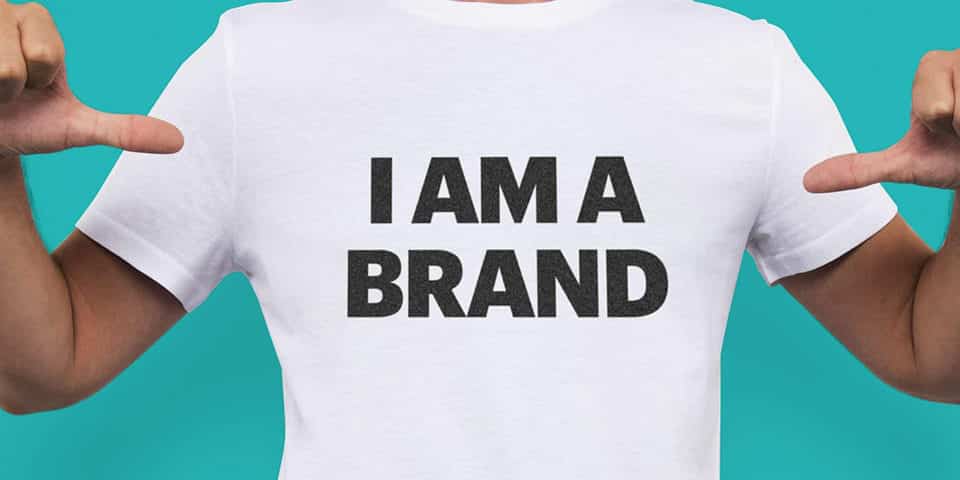
The Secret Language of Motivation
10 June 2018
Knowing Facial Expressions Improves Emotional Skills
5 July 2018Personal Branding: make yourself a Brand!

It has been more than fifty years now since Andy Warhol said, with extraordinary prescience, “in the future everyone will be famous for fifteen minutes“. Today, what might have seemed only the outlandish prediction of a visionary genius has become reality. The spread of the Internet and social media, together with a changed scenario in the world of work, have made it not only possible, but in some ways indispensable, to master web communication techniques aimed at promoting one’s ideas and professional goals.
Personal Branding means setting up a strategy to identify and define one’s strengths. Trying to clearly describe what our distinctive trait is, what makes us original, the characteristics that make us different from our competitors. The next step is to effectively explain why we decided to undertake a certain activity and how we do it.
Social media have the power to put us in contact with an almost infinite network of people; this is clearly a great advantage but at the same time exposes us to the risk of dispersing our efforts in an environment that is too vast. It is therefore necessary to learn about the characteristics of the different networks and to define the right communication strategy for each of them. It is also important to acquire skills on how to build a network of relationships through effective messages capable of conveying a coherent image (brand identity), and to empathise with other people.
And this is precisely the most important aspect, and one that requires careful reflection, if we are to avoid the risk of undertaking this activity in a superficial manner, producing obvious and banal results. The idea of being able to ‘sell’ one’s image is a formula often used by those who want to make it clear in a concise and incisive manner what personal branding is, but it is a good idea not to take this statement literally, also because in any marketing strategy it is always possible to grasp different approaches between the ‘promotion’ of a brand and the ‘sale’ of a product. Similarly, it is necessary to understand what the differences are between a strategy built to enhance a corporate brand and the promotion of a person’s image.
The first and most obvious is that in the first case we are dealing with a person-object relationship, in the second situation we are instead dealing with a person-person relationship. Let us therefore return to the two important concepts illustrated above: building a coherent image (brand identity), and empathising with other people. While it is possible to establish some analogies with the strategies that are used to promote a brand, we must consider that the mechanisms of recognition and identification that come into play in the person-person relationship are very different. The values, motivations and deep symbolic aspects that are evoked, and which are leveraged to create empathy, must be handled with greater care and sensitivity, modulating the nature and intensity of the message if we want to connect with other people.
Let us therefore see what are the most important steps that need to be taken to set up a personal branding strategy:
- What is our distinguishing feature: if we want to stand out in a business, we should try to highlight the distinctive elements that characterise us. Our style, our ideas, the particular way in which we approach our endeavours.
- Our strengths: if we want to stand out in a business, we should try to emphasise our distinctive features.
- Strengths: what are our best assets (skills, competences, aptitudes, specialised preparation, training, studies, etc.)
- Apparently marginal aspects: often what is intriguing are the details, details that are apparently insignificant and less directly related to the context. They can convey a trait of originality and help to ‘humanise’ our descriptions, fostering the empathic process.
- Choosing the medium of the description
- Choosing the medium: the medium (one or more) through which one decides to communicate is an important choice on which important evaluations on the communication strategies to adopt depend
- Choosing a language and style of communication: the language is closely linked to the chosen medium, as is the style of communication, it is very important to take this into account but without renouncing to enhance one’s own style and spontaneity
- Build a network of relationships: as we have seen, the Internet and social media are extraordinary promotional tools available to anyone. However, we must always remember what their function is: they are a means through which to build a network of relationships because, in the end, nothing pays off more than word of mouth.
- Transmitting emotions: they are a means of building a network of relationships.
- Transmitting emotions: allocating a space to tell wishes, dreams and plans for the future. Stories and emotions inspire people.
.
.
.
I&G Management periodically organises workshops dedicated to ‘Self Branding’, events aimed at all those who wish to improve their communication style at 360° (from verbal and non-verbal communication to webmarketing), in order to enhance the image of themselves or their company to maximise personal performance and make the most of their resources.
Understanding the importance of self-branding helps us to stimulate creative reflection on the image we wish to convey. Acquiring new skills to manage this activity, which was born and has developed within the world of the Internet and social media, also produces beneficial effects within traditional relational networks: too many times in the course of our professional experience we have encountered extremely good people who were relegated to roles that were not up to their abilities, and this only because they were unable to promote themselves within the organisation.


